

Original Article - Year 2022 - Volume 37 - Issue 2
The "Soft Skills" of plastic surgeons and their teams, compared to other occupations in a COVID-19 pandemic environment
As "Soft Skills" dos cirurgiões plásticos e suas equipes, em comparação a outras ocupações em ambiente de pandemia COVID-19
ABSTRACT
Introduction: This article aims to understand the importance of "Soft Skills "digital recruitment and selection. The term "Soft Skills" means psychological attitudes and constructive behaviors in interacting with people and groups. In this context, the tools used to evaluate them and the appropriate Soft Skills in the various professional areas during COVID-19 were identified.
Methods: The primary data collection was carried out through interviews with experts in April 2020, and a survey applied between July and December 2020. After cleaning the data, the sample resulted in 169 respondents, allowing the performing descriptive statistical analysis of the data.
Results: It was observed that Soft Skills have become more strategic in COVID-19. In addition, when comparing physicians specializing in Plastic Surgery with other professions, there was a higher incidence of the degree of total agreement among plastic surgeons.
Conclusion: The results found may suggest that the strategic importance of Soft Skills has become even more intense among physicians specializing in Plastic Surgery. These results, obtained through a survey with quantitative data, align with this article's scientific literature and with corporate organizations' studies.
Keywords: Persuasive communication; Resilience, psychological; Health human resource training; Emotional intelligence; Empathy; Social skills; Coronavirus infections; Surgery, plastic.
RESUMO
Introdução: O objetivo deste artigo foi compreender a importância das "Soft Skills" no contexto do recrutamento e seleção de forma digital. O termo "Soft Skills" significa: atitudes psicológicas e comportamentos construtivos na interação com pessoas e grupos. Nesse contexto foram identificadas as ferramentas que estão sendo utilizadas para avaliá-las e quais são as Soft Skills adequadas nas diversas áreas profissionais em tempos de COVID-19.
Métodos: A coleta de dados primários foi realizada através de entrevistas com especialistas que ocorreram em abril de 2020 e de uma survey que foi aplicada entre julho e dezembro de 2020. A amostra, após a limpeza dos dados, resultou em 169 respondentes, permitindo a realização da análise estatística descritiva dos dados.
Resultados: Observou-se que as Soft Skills tornaram-se mais estratégicas no panorama da COVID-19. Além disso, ao comparar-se os médicos com especialidade em Cirurgia Plástica em relação às outras profissões, houve maior incidência do grau de concordância total entre os cirurgiões plásticos.
Conclusão: Os resultados encontrados podem sugerir que entre os médicos com especialidade em Cirurgia Plástica a importância estratégica das Soft Skills tornou-se ainda mais intensa. Estes resultados, obtidos por meio de uma survey com dados quantitativos, estão em sintonia com a literatura científica apresentada neste artigo, assim como com estudos de organizações corporativas.
Palavras-chave: Comunicação persuasiva; Resiliência psicológica; Capacitação de recursos humanos em saúde; Inteligência emocional; Empatia; Habilidades sociais; Infecções por coronavírus; Cirurgia plástica
INTRODUCTION
“Soft Skills” are personal behaviors that occur during social interaction. They are psychological attitudes and constructive behaviors in interaction with people and groups. These behaviors can improve interpersonal interactions, work performance and career development, as reported by study1,2, which describes that “Soft Skills” can be responsible for up to 85% of professional success. In the context of the advance of artificial intelligence, of social and economic relations in an environment of uncertainty, “Soft Skills” have gained strategic importance in working and in the construction of competencies of those who hire and who are hired3.
With the Coronavirus disease 2019 (COVID-19) pandemic, doctors specializing in Plastic Surgery also had an emotional overload due to the deprivation of work in the first periods of the pandemic, especially with elective surgeries suspended or, in the case of those who worked in the front of the pandemic, had significant elevations in their stress levels. However, the validation of telemedicine and digital certification enabled paradigm shifts in remote care, with new benefits and limitations in this type of consultation. In turn, due to the repressed demand for surgeries, the resumption of work led to an overload of physical and virtual work. There was a need to emotionally deal with patients who had also been impacted by the pandemic, often with high expectations regarding the results of their surgeries, demanding more refined and careful interactions such as “Soft Skills.”
There is a lot of scientific and technical research on the subject of “Soft Skills,” among them the one that reports that these skills should be adopted as a common feature of the selection of skills and community character traits4. It was published on the recognition and evolution of the importance of these social skills, demonstrating that their acquisition has been an exciting task5. The most important skills are critical thinking, social skills, communication skills, teamwork and ethical attitudes2. Farmer6 highlights in its publication the following “Soft Skills”: communication, leadership and problem-solving.
“Soft Skills” are traits and behaviors that characterize our relationships with others7. This is the ability to be able to identify our emotions. An emotion normally triggers a behavioral reaction. The results, productive or counterproductive, depend on the situation you find yourself in. Knowing how to disconnect from the self-protective behavioral impulses that certain emotions such as anger or fear provide can be highly productive in conflict management scenarios or important decisions7.
It can be seen from the publications of these scholars that there is a wealth of alternatives in the understanding of “Soft Skills” in the employment and work relations of companies at different hierarchical levels and company sizes what it can mean for businessmen, entrepreneurs, managers, consultants, and people management specialists the great importance of these behaviors and attitudes for decision making. Candidates for new jobs or positions in selection environments such as postgraduate programs are evaluated in the “Soft Skills” item as a factor of acceptance or not, even if, sometimes, subliminally, without direct inquiries about possible interpersonal relationship skills.
Understanding and competencies related to “Soft Skills” can represent an evolution in recruiting, selecting, hiring, and terminating employees and partners, making each step more precise and qualified. To assess these skills during the recruitment and selection process, the interview allows for richer, twoway communication for the employer and candidate to establish congruence in work and expectations.
The evaluation of “Soft Skills” through simulations and tests can also provide data for a reliable analysis of the candidate’s profile8. Another assessment feature of “Soft Skills” is gamification, which, in addition to reducing hiring costs, improves the results of candidate behavioral analysis when compared to conventional tests. This is due to the environment created to provide the candidate with anxiety reduction. With this, the probability of unreal behaviors and behaviors that are better accepted during an evaluation process is reduced9.
The examples of the use of digital tools for the assessment of “Soft Skills” are in line with a study carried out in 2017 by Deloitte10, an organization in the audit and business consulting segment, which reports that one of the areas of greatest attention in the Transformation processes in Digital of organizations is the Human and Organizational Development (DHO) sectors. In addition, one can see the need for companies to adapt to the digital evolution taking place11,12. According to Aguiar et al.13, digital transformation, in addition to being crucial for sustaining organizations, has characteristics that reflect not only on technology but also on mindset, employee performance, organizational culture and leadership. Finally, this need for adaptation was enhanced by the COVID-19 pandemic.
OBJECTIVE
The objective of this study was to evaluate whether “Soft Skills” have become more strategic for institutions with the pandemic and the importance of these behaviors in different areas, including comparing with medical professionals specialized in Plastic Surgery.
METHODS
The field study in a quantitative and digital way
The primary data collection was carried out in a survey type. The structure and questions of the survey were preceded by in-depth interviews with specialist recruitment and selection professionals. The interviews with experts took place in April, and the survey between July and December 2020; both the interviews with experts and the survey were carried out when the COVID-19 pandemic was in the community contamination phase in Brazil.
The application of the survey for data collection investigated the ways of evaluating the “Soft Skills” of the candidates and the use of digital tools. The survey was designed and tested with specific questions about “Digital Recruitment and Selection in the Panorama of COVID-19 Impacts”. The sample was obtained from the contact network of the research authors, and invitations to participate in the survey were sent using e-mail, WhatsApp, Instagram and LinkedIn. The criteria adopted to obtain the sample were professionals who participated in the recruitment and selection process, with invitations to professional groups available in the contacts of the authors of the present study and a proposal for subsequent sharing.
The initial sample consisted of 231 respondents, of which 62 protocols were excluded, which resulted in a sample of 169 valid respondents, allowing for descriptive analysis and inferences about the population. The reasons for excluding cases from the initial sample were the non-performance of respondents in the interview for hiring their team and incomplete or duplicated questionnaire. In addition, the method for constructing the boxplot graph was used, as shown in Figures 1, 2 and 3, to identify outliers, which indicate atypical observations in the sample.
In Figure 1, which illustrates the boxplot concerning question 12 of the questionnaire on the degree of agreement that “Soft Skills” have become more strategic with COVID-19, two cases considered outliers were observed. These interviewees answered the question using a degree of agreement of 1, that is, they totally disagreed with the statement.
Regarding Figure 2, which refers to the boxplot of question 15 of the survey on the degree of agreement that with COVID-19, evaluating “Soft Skills” in Recruitment & Selection has been 100% digital, were not observed outliers.
Analogously to Figure 2, Figure 3 also does not present outlier data, referring to question 18 of the questionnaire, which indicates an overall score for satisfaction with your Personal Quality of Life in the last 24 hours, with 0 (zero) lousy and 10 (ten) excellent.
In summary, from the analysis of the three questions with qualitative variables, there are two outlier cases in the sample, due to question 12, and, after verifying these cases, it was concluded that the answers were consistent among the various variables of the research, the respondents could be considered as representative of a portion of the population and should be kept in the sample.
The survey was structured with 20 questions (Chart 1). The tool used to apply the questionnaire was Google Forms. For methodological structuring, the Mooring Matrix was used in the Mazzon Method14 to relate aspects of the theoretical model, objectives, hypotheses, questions, and analysis techniques, as described in Chart 2.
| Survey - Part 1: Profile. |
| 1 Indicate your professional performance concerning recruitment and selection for your team: |
| 2 E-mail to send the final report |
| 3 Gender |
| 4 Age group |
| 5 Main formation |
| 6 Municipality where you work |
| 7 Indicate the Federation Unit (UF) in which you work |
| 8 Company segment |
| 9 Indicate the number of hired Employees (formal, outsourced and informal); |
| Survey - Part 2: Characteristics of the COVID-19 Environment. |
| 10 In times of COVID-19, indicate your place of work: |
| 11 In the face of the COVID-19 pandemic, indicate the "Soft Skills" (i.e., behavioral and relational skills) that are most relevant in your opinion. These items were inspired by LinkedIn's "Global Talent Trends 2019" survey and previous studies by our research team. |
| 11b Among the "Soft Skills," indicate the ones you use in your activity: |
| 12 Using a scale from 1 to 7, indicate the degree of agreement with the following statement: "With COVID-19, "Soft Skills" have become more strategic for your company/office/clinic." |
| 13 Currently, in times of COVID-19, are you performing Recruitment & Selection at the company/office/clinic? |
| 14 Indicate ONE or MORE tools listed below, which you or your company's team use to evaluate the "Soft Skills" (here defined as behavioral and relational skills) in the Digital Recruitment & Selection processes in an environment of COVID-19 : |
| 15 With COVID-19, the "Soft Skills" assessment processes that I perform or manage in Recruitment & Selection have been 100% digital. Indicate the degree of agreement from 1 to 7. |
| 16 Indicate one or more positions and responsibilities in which "Soft Skills" are important in your company/office/clinic: |
| 17 What is the biggest challenge in evaluating "Soft Skills" in recruitment and selection in the COVID-19 environment? |
| 18 Give an overall rating for satisfaction with your Personal Quality of Life in the last 24 hours, with 0 (zero) being very bad and 10 (ten) being excellent: |
| 19 Indicate the date on which you are answering this questionnaire: |
| 20 Comments and doubts: |
Source: Prepared by the authors.
| Theoretic model Research Objective | Research Hypothesis | Question | Analysis Techniques | |
| Context in times of Covid Perform Recruitment & Selection ↓ Use digital tools ↓ Identify "Soft Skills" in the various areas of activity |
Check the strategic importance of "Soft Skills" in the context of the Recruitment & Selection process |
With the COVID-19 pandemic, "Soft Skills" have become more strategic for organizations |
Q12 | Check the mean value and the variability of the degrees of agreement on the Likert scale. |
Source: Prepared by the authors.
Finally, a detailing was carried out for the sample composed of physicians specialized in Plastic Surgery to verify if this group’s behavior is like the profile of the rest of the sample. The survey structure is divided into two groups of questions, the first related to the profile of the respondent and the second with the characteristics of the COVID environment, as shown in the following charts 1 and 2.
The survey questions were constructed from scientific publications and interviews with experts.
Analysis of Results
Sample profile
The first criterion for inclusion in the sample was the professional attitude of the respondent concerning the practice of recruitment and selection to comprise his team. For this purpose, Figure 4 presents the response frequencies for each action. This specific question was about the possibility of selecting more than one job, and the total number of responses from professional jobs was slightly higher than the number of interviewees, 175 and 169, respectively. The main specialties presented were Human Resources/People Management professionals, owners or partners of clinics/offices and a doctor with a specialty in Plastic Surgery, with 78% of participation among the interviewees.
Based on the analysis of the sample data, Tables 1, 2 and 3 present frequencies that characterize the sample profile in terms of gender, age group and main education.
| Gender | The amount | Participation (%) |
|---|---|---|
| Female | 88 | 52 |
| Male | 81 | 48 |
| Total | 169 | 100 |
Source: Survey data.
| Age | The amount | Participation (%) |
|---|---|---|
| 20 to 29 years | 49 | 29 |
| 30 to 39 years | 25 | 15 |
| 40 to 49 years | 48 | 28 |
| 50 to 59 years | 30 | 18 |
| 60 to 69 years | 16 | 9 |
| 70 to 79 years | 1 | 1 |
Source: Survey data.
| Training | Quantity | Participation (%) |
|---|---|---|
| Accountant | 45 | 26 |
| Doctor | 32 | 19 |
| Administrator | 29 | 17 |
| Psychologist | 23 | 13 |
| Engineer | 8 | 5 |
| Teacher | 8 | 5 |
| Vet | 3 | 2 |
| Information Technology | 3 | 2 |
| Human Resources | 3 | 2 |
| Others | 15 | 9 |
| Total | 169 | 100 |
Source: Survey data.
Regarding the municipality where the interviewee works, most respondents indicated the city of São Paulo (66%), and the other municipalities were selected in a heterogeneous way, with rates of less than 5% of participation in the sample. Similarly, the state with the largest sample presence is São Paulo, with 82% of the responses. About the company’s segment, Table 4 presents the results.
| Segment | The amount | Participation (%) |
|---|---|---|
| Health | 37 | 22 |
| Education | 24 | 14 |
| Services | 24 | 14 |
| Financial institution | 20 | 12 |
| Consultancy | 17 | 10 |
| Others | 47 | 28 |
| Total | 169 | 100 |
Source: Survey data.
Regarding the size of the company (represented in Figure 5), including the number of contracted and outsourced employees, the profile of the respondents is concentrated in micro-companies (up to 5 employees), with 39%, and large companies (with more than 1000 employees), with approximately 21%. Finally, Figure 6 shows that most respondents worked from home (64%) in a COVID-19 environment.
Strategic importance of Soft Skills
In order to verify the strategic importance of “Soft Skills” in the context of the organizations’ Digital Recruitment and Selection process, which is the objective of the Mooring Matrix (Chart 2), information regarding the degree of agreement of respondents regarding the statement that “With COVID-19, “Soft Skills” have become more strategic for your company, office or clinic,” and the assessment was made on a scale of 1 to 7, where 1 means “I totally disagree” and 7 “I totally agree.”
From the data analysis, an average score of 5.7 was obtained, with 82% having a favorable opinion of the statement, and the category with the highest incidence is that of total agreement concerning the statement with 34% of respondents. Only 4% have a contrary opinion to the statement, and 14% have a neutral opinion. In this way, the hypothesis regarding the purpose of the Mooring Matrix can be confirmed that with the COVID-19 pandemic, “Soft Skills” became more strategic for organizations. These results are represented in Figure 7.
Regarding physicians specializing in Plastic Surgery, similar results were obtained for this same question about the total sample, with an average score of 5.8, 82% with a favorable opinion on the statement and 41% of respondents with a total agreement regarding the statement. Figure 8 presents the results.
Finally, a comparison was made between the opinions of doctors specializing in Plastic Surgery and other professions regarding the degree of agreement that, with COVID-19, “Soft Skills” have become more strategic. In general, there is a similar behavior between the two professional categories, and a considerable difference occurred in the degree of total agreement in which there was a higher incidence among doctors in Plastic Surgery than in other professions (41% against 33%), according to shown in Figure 9.
DISCUSSION
The “Soft Skills, “behavioral capabilities based on emotional intelligence, as a guarantee of the doctorpatient relationship factor and quality of care, must be exercised and developed throughout the patient care production chain. Consequently, recruiting personnel with these skills already under development is relevant. In this context, “Soft Skills” enable emotional control, adherence to treatment and better management of conflicts and crises, leading to a decrease in judicialization rates and an increase in the cure rate.
“In nursing, it is known that ‘Soft Skills’ are responsible for 85% of professional success”15. “Physicians with good communication skills identify patients’ problems more accurately” 16. Global Talent Trends published on the social network LinkedIn that the skills most required by the job market are creativity, collaboration, adaptability, agility and team management. Based on these bases and studies, the following characteristics of “Soft Skills” were identified: Altruism, Resilience, Creativity, Collaboration, Adaptability, Agility, Team Management, Communication and Positive Attitude17.
The panorama of the year 2020, due to the SARSCoV-2 mutation pandemic - COVID-19, dramatically and imposingly catalyzed a behavioral paradigm shift in the work environment. Because it is a rapidly spreading viral mutation through, until then, respiratory secretions, sanitary measures of social isolation were determined by the World Health Organization18. Social isolation is characterized by the flattening of the infection curve and the spread of cases so that it is possible to gain time for the production of a vaccine or the determination of an effective treatment. Although the measure is beneficial in preventing the spread of the virus, it also brings very important negative emotional reflexes, potentiated by panics, such as anxiety, loss of sleep, somatic pain and depression19.
The environment of new paradigms was installed worldwide after the pandemic. For example, business air travel was canceled, agglomerations were banned, and financial impacts on the world’s largest corporations were harshly felt. The need to have people with high “Soft Skills” characteristics has become paramount for the survival of teams and leaders who have had to quickly adapt to the digital environment to hold meetings and determine the direction of corporations.
Although part of the professionals stayed at home, the distress caused by the rapid change in paradigms was also accentuated by the increase in the workload of virtual work in the Home Office, with new challenges to face working conditions, impacting the perception of the Quality of Life at work. The definition presented for Quality of Life at Work in a COVID-19 environment was inspired by the studies by França20, which are well-being choices in the biological, psychological, social and organizational dimensions to improve well-being and reduce discomfort in and out of work. The candidate evaluation system has increased the importance of behavioral, emotional and relational skills, in a digital environment, in the recruitment and selection processes, given this new scenario
There are already studies that demonstrate the importance of the behavior of plastic surgeons in a specific way, such as Camargo21, which states: “... the plastic surgeon who respects ethical standards by carrying out his medical advertising actions within the legal norms adopted by regulatory councils, it can lose credibility and suffer the consequences when it cannot keep up with the growth of services provided by the internet, social media and mobile applications”. Therefore, “Soft Skills” can strengthen the exercise of leadership by professionals, including the leadership of medical specialists in Plastic Surgery.
Our perception, coming from the empathic links that are immediately established in human contact, in person or at a distance, can provide us, through empathy, recognition of the interlocutor’s emotional state. Thus, authentic leadership can be exercised, and possible reactions can be adequately anticipated. In this way, behavioral and communication skills are fundamental in the different ways in which we relate to the external environment and how we process frustrations and how we react to them in our relationships, in the personal and professional spheres.
“Soft Skills” have gained more and more importance in different areas and have become even more strategic with the pandemic, especially in the medical area, telemedicine, team hiring, and leader and/or entrepreneur. The investigation of “Soft Skills” in the COVID-19 scenario, with an emphasis on the interactions of plastic surgeons and their work teams, proved to be important and with good opportunities for training and improving doctor-patient, doctor-team and team-patient relationships, which became more evident when comparing professionals from other areas.
CONCLUSIONS
The study made it possible to assess the degree of the strategic importance of “Soft Skills” in times of COVID-19 under the aspects of the relevance of behavioral skills in different organizations. It was observed that the hypothesis related to the fact that “Soft Skills” become more strategic was validated with the results of the research, including with the doctors specialized in Plastic Surgery.
As for the total agreement with the fact that “Soft Skills” have become more strategic in the context of COVID-19, there was a higher percentage of agreement among plastic surgeons. This suggests that, among physicians specializing in Plastic Surgery, the strategic importance of “Soft Skills” has become even more intense.
We can conclude that the results obtained through a survey with quantitative data were in line with the scientific literature presented in this article and with studies of corporate organizations.
REFERENCES
1. Tang KN. The importance of Soft Skills acquisition by teachers in higher education institution. Kasetsart J Soc Sci. 2018;41:22-7. DOI: https://doi.org/10.1016/j.kjss.2018.01.002
2. Ng LK. The perceived importance of soft (service) skills in nursing care: A research study. Nurse Educ Today. 2020;85:104302. PMID: 31810027 DOI: https://doi.org/10.1016/j.nedt.2019.104302
3. North DC. Institutions, Institutional Change and Economic Performance. Cambridge: Cambridge University Press; 1990. DOI: 10.1017/CBO9780511808678
4. Tang KN, Tan CC. The importance of ethics, moral and professional skills of novice teachers. Procedia Soc Behav Sci. 2015;205:8-12.
5. Hodges D, Burchell N. Business graduate competencies: Employers’ views on importance and performance. Asia Pac J Coop Educ. 2003;4(2):16-22.
6. Farmer DL. Soft skills matter. JAMA Surg. 2015;150(3):207. PMID: 25564747 DOI: https://doi.org/10.1001/jamasurg.2014.2250
7. Goleman D. Inteligência Emocional - A teoria revolucionária que redefine o que é ser inteligente. 1ª ed. Rio de Janeiro: Objetiva; 1996.
8. Brannam MJ, Parsons E, Priola V, eds. Branded Lives: The production and consumption of meaning at work. 1st ed. Cheltenham: Edward Elgar Publishing; 2011.
9. Nikolau I, Georgiou K, Kotsasarlidou V. Exploring the Relationship of a Gamified Assessment with Performance. Span J Psychol. 2019;22:E6. DOI: https://doi.org/10.1017/sjp.2019.5
10. Delloitte. Soft skills for business success. [Internet]. Sydney: Deloitte Access Economics; 2017. Disponível em: https://www2.deloitte.com/au/en/pages/economics/articles/soft-skills-businesssuccess.html
11. Hanna N. Enabling Enterprise Transformation. New York, NY: Springer Science+Business Media, LLC; 2010.
12. Bensberg F, Buscher G, Czarnecki C. Digital Transformation and IT Topics in the Consulting Industry: A Labor Market Perspective. In: Nissen V, ed. Advances in Consulting Research. Springer: Cham; 2019. p. 341-57.
13. Aguiar FF, Raup DS, Macedo M. A transformação digital no setor de recursos humanos: U estudo de caso sobre o uso da tecnologia no processo de recrutamento e seleção. In: Anais do Congresso Internacional de Conhecimento e Inovação - Ciki. 2019;1(1). Disponível em: https://proceeding.ciki.ufsc.br/index.php/ciki/article/download/716/389
14. Mazzon JA. Using the methodological association matrix in marketing studies. Rev Bras Mark. 2018;17(5):747-70. DOI: https://doi.org/10.5585/bjm.v17i5.4175
15. Wats M, Wats RK. Developing soft skills in students. Int J Learn. 2009;15(2):1-10. DOI: https://doi.org/10.18848/1447-9494/CGP/v15i12/46032
16. Reed S, Shell R, Kassis K, Tartaglia K, Wallihan R, Smith K, et al. Applying adult learning practices in medical education. Curr Probl Pediatr Adolesc Health Care. 2014;44(6):170-81. PMID: 24981666 DOI: https://doi.org/10.1016/j.cppeds.2014.01.008
17. Chanler M, Dye C, Coppinger C, Nieh G, Maris T. Global Talent Global Trends: The 3 trends transforming your workplace. Linkedin [Internet] 2019. p. 6-15 [Acesso 2020 Jun 24]. Disponível em: https://business.linkedin.com/content/dam/me/business/en-us/talent-solutions/resources/pdfs/global_talent_trends_2019_emea.pdf
18. World Health Organization (WHO). Considerations in adjusting public health and social measures in the context of COVID-19: Interim guidance. [Internet]. Geneva: WHO; 2020. Disponível em: https://apps.who.int/iris/bitstream/handle/10665/331773/WHO-2019-nCoV-Adjusting_PH_ measures-2020.1-eng.pdf?sequence=1&isAllowed=y
19. Majumdar P, Biswas A, Sahu S. COVID-19 pandemic and lockdown: cause of sleep disruption, depression, somatic pain, and increased screen exposure of office workers and students of India. Chronobiol Int. 2020;37(8):1191-200. PMID: 32660352 DOI: https://doi.org/10.1080/07420528.2020.1786107
20. França ACL. Práticas de Recursos Humanos: conceitos, ferramentas e procedimentos. São Paulo: Atlas; 2007.
21. Camargo VJ. Uso de aplicativos digitais móveis e sua integração em cirurgia plástica. Rev Bras Cir Plást. 2020;35(4):436-42.
1. Universidade de São Paulo, Faculdade de Economia, Administração e Contabilidade,
São Paulo, SP, Brazil
2. Faculdade de Tecnologia - FATEC, Itatiba, SP, Brazil
3. Instituto Federal Minas Gerais, Campus São João Evangelista, Belo Horizonte, MG,
Brazil
4. Universidade de São Paulo, Faculdade de Medicina Veterinária e Zootecnia, São Paulo,
SP, Brazil
Institution: Universidade de São Paulo, Faculdade de Economia, Administração, Contabilidade e Atuária, São Paulo, SP, Brazil.
MFM Analysis and/or interpretation of data, Statistical analysis, Final approval of the manuscript, Data Collection, Conceptualization, Conception and design of the study, Resource Management, Project Management, Investigation, Methodology, Carrying out operations and/or experiments, Writing - Preparation of the original, Writing - Review and Editing, Software, Supervision, Validation, Visualization.
ABA Analysis and/or interpretation of data, Statistical analysis, Final approval of the manuscript, Data Collection, Conceptualization, Conception and design of the study, Resource Management, Project Management, Investigation, Methodology, Carrying out operations and/or experiments, Writing - Preparation of the original, Writing - Review and Editing, Software, Supervision, Validation, Visualization.
ACLF Analysis and/or interpretation of data, Statistical analysis, Final approval of the manuscript, Data Collection, Conceptualization, Conception and design of the study, Resource Management, Project Management, Investigation, Methodology, Carrying out operations and/or experiments, Writing - Preparation of the original, Writing - Review and Editing, Software, Supervision, Validation, Visualization.
ECJ Analysis and/or interpretation of data, Statistical analysis, Final approval of the manuscript, Data Collection, Conceptualization, Conception and design of the study, Resource Management, Project Management, Investigation, Methodology, Carrying out operations and/or experiments, Writing - Preparation of the original, Writing - Review and Editing, Software, Supervision, Validation, Visualization.
MBB Analysis and/or interpretation of data, Statistical analysis, Final approval of the manuscript, Data Collection, Conceptualization, Conception and design of the study, Resource Management, Project Management, Investigation, Methodology, Carrying out operations and/or experiments, Writing - Preparation of the original, Writing - Review and Editing, Software, Supervision, Validation.
TSA Analysis and/or interpretation of data, Statistical analysis, Final approval of the manuscript, Data Collection, Conceptualization, Conception and design of the study, Resource Management, Project Management, Investigation, Methodology, Carrying out operations and/or experiments, Writing - Preparation of the original, Writing - Review and Editing, Software, Supervision, Validation, Visualization.
AFKTL Analysis and/or interpretation of data, Statistical analysis, Final approval of the manuscript, Data Collection, Conceptualization, Conception and design of the study, Resource Management, Project Management, Investigation, Methodology, Carrying out operations and/or experiments, Writing - Preparation of the original, Writing - Review and Editing, Software, Supervision, Validation, Visualization.
Corresponding author: Marco Flávio Mastrandonakis, Av. Prof. Luciano Gualberto, 908, Sala C18, Núcleo GQVT FEA-USP, Butantã, São Paulo, SP, Brazil, Zip Code: 05508-010, E-mail: dr.marcoflavio@gmail.com
Article received: April 06, 2021.
Article accepted: July 14, 2021.
Conflicts of interest: none.




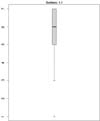
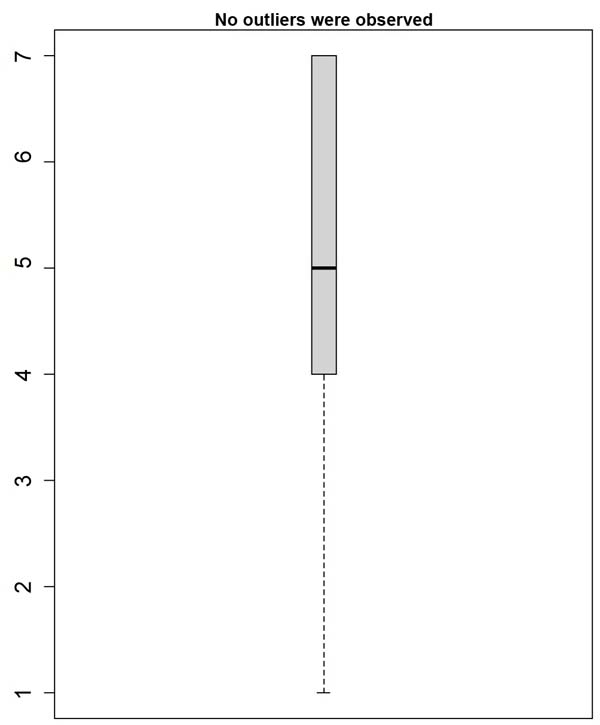

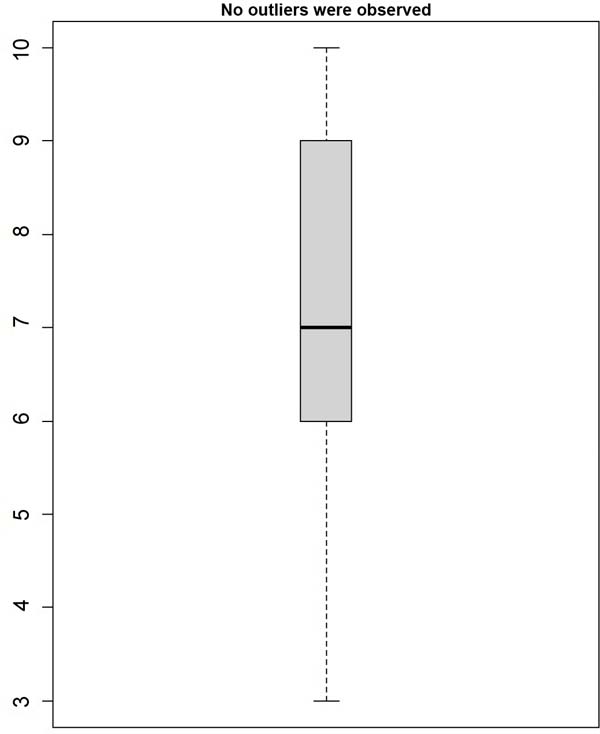



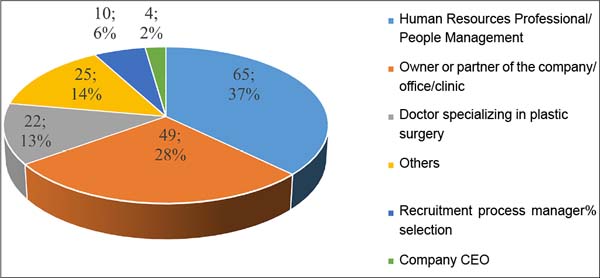







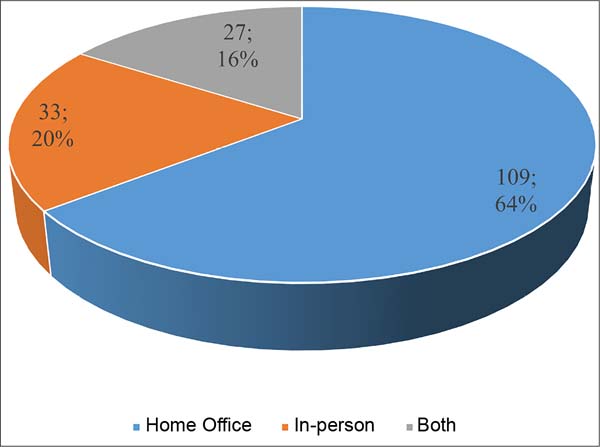

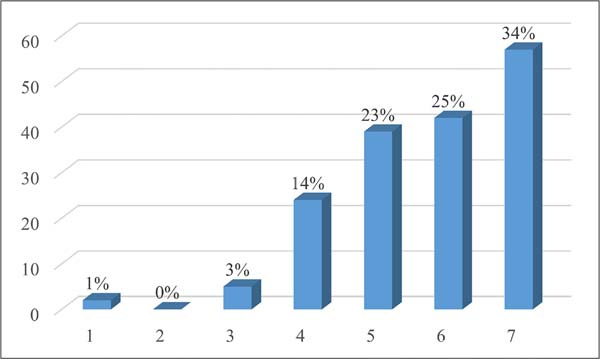

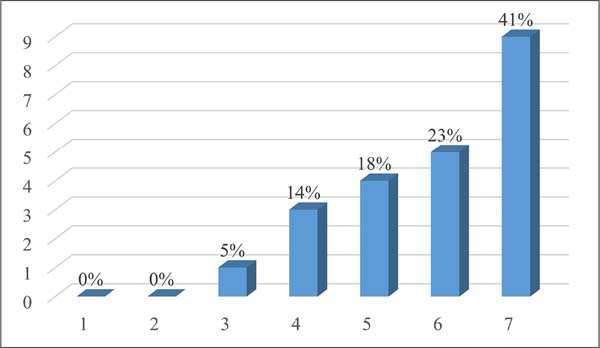

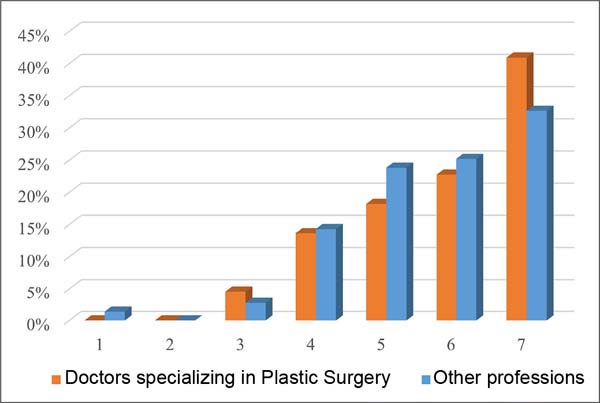

 Read in Portuguese
Read in Portuguese
 Read in English
Read in English
 PDF PT
PDF PT
 Print
Print
 Send this article by email
Send this article by email
 How to Cite
How to Cite
 Mendeley
Mendeley
 Pocket
Pocket
 Twitter
Twitter